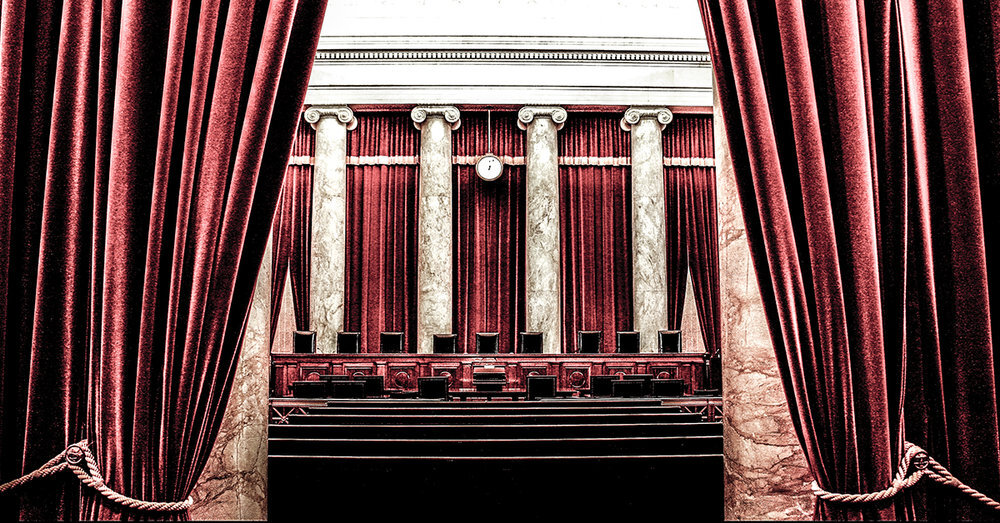Courting Controversy: 5 Troublesome Supreme Court Nominations
Since the death of the late Justice Antonin Scalia, there has been an ongoing debate as to whether the President Obama should fill the vacancy left on the bench of the Supreme Court. This authority is given to the Executive in Article II, Section II, of the US Constitution. However, the Senate must approve of the appointment, and therefore it has the final say in the matter. This would be less of a debate if the President and Senate were politically aligned, but due to the ideological divide, it likely will be an argument that carries to the end of Obama’s term in office.If the vacancy lasts until 2017, it would be important enough to make the textbooks. The Supreme Court, the highest court in the nation, would have had its longest vacancy, and the country could have different federal laws based on Supreme Justices splitting 4-4.However, this is hardly the only contentious battle between a ruling President and his Senate over court appointments. Below, in no particular order, is a short summary of five such cases in US history when appointments were battled over by America’s elected officials.
The Twice-Appointed Rutledge
John Rutledge was heavily involved in South Carolina politics before and after the American Revolution, serving as representative, Governor and State President. After the ratification of the US Constitution, Rutledge was appointed to the Supreme Court the same day as Chief Justice John Jay. A few months later, without ever hearing a case, Rutledge resigned to be Chief Justice of South Carolina’s Courts. Washington eventually nominated him again, but since the nomination was made during a Senate adjournment, Rutledge immediately took up the vacancy. However, in July 1795, not a month after his appointment, Rutledge gave a speech in which he spoke so poorly of the retiring John Jay and of Washington’s treaty with England, and openly called to return to war with the British, that he was judged as a lunatic and drunkard. When his formal nomination came before the Senate, they voted against him, making him the only appointment to ever be kicked off the bench. Even a friend, John Adams, would note that Rutledge deserved the rejection. Speaking of Adams…
The Midnight Judges
Arguably the most controversial and important battle over court appointments took place in 1801 when President Adams tried to fill multiple federal circuit judge appointments up until his last day in office. Adams and Federalists noted a need for a federal appeals court, and made a last-ditch effort for the party to hold onto federal power. Federalists created the federal appeals court by passing the Judiciary Act of 1801, and Adams worked tirelessly to fill the newly created positions. This came to a head when one appointee, William Marbury, did not receive his commission from newly appointed Secretary of State James Madison and the issue was brought to the Supreme Court. Chief Justice John Marshall, an appointee of Adams’s, ruled that Madison broke the law, but that the law itself was unconstitutional. This ruling simultaneously defeated Marbury’s case, invalidated the Judiciary Act of 1801, and empowered the Supreme Court through the establishment of Judicial Review.
Roger Taney, Jacksonian Tagalong
A supporter of Andrew Jackson, Roger Taney rode Jackson’s coattails to the Supreme Court. First, Taney had served in Jackson’s cabinet. As Attorney General he was involved in upholding slave and anti-free black state laws. Jackson then was going to appoint Taney as Treasury Secretary, but the Whigs in Congress, angry over the defeat of the Second National Bank, rejected the appointment. So, Jackson then nominated him to fill a vacancy on the Supreme Court. Again, the Whigs rejected the appointment—but after the election of 1834, they would soon be outnumbered by incoming newly elected Democrats. Taney, again, was nominated, this time for Chief Justice, which he won and served as for nearly thirty years. It should be noted that Taney gave the majority opinion on the Dred Scott ruling, and yet still served on the Supreme Court for the bulk of the Civil War, making his appointment all the more controversial. Also, he was appointed in Jackson’s last year in office.
Louis Brandeis, The Original Mensch on the Bench
Before World War I America wasn’t known for its acceptance of different ethnic and cultural groups. Jim Crow laws were going strong and in 1907 anti-“New” immigrant laws targeted Southern and Eastern Europeans. So, in 1916, when Wilson nominated Louis Brandeis—a Jewish civil justice lawyer—to the Supreme Court, it caused quite the uproar. Former President Taft would be one of his biggest critics, claiming Brandeis was using Judaism to garner political favor, with others claiming he was unfit to rule. The Senate Judicial Committee would hold its first-ever public hearings to allow character witnesses for and against Brandeis to come forward, and an unprecedented four months would elapse before a vote was taken. Eventually Wilson penned his own letter to the committee expressing his views of Brandeis as a “genius” and a man of principle. He got the job with over two-thirds of the vote, which split essentially along party lines. Brandeis was just one of two Supreme Court Justices (the other being John Clarke) appointed that summer during an election year.
The Less-Than-Honest Abe Fortas
Abe Fortas was appointed to the Supreme Court by his best buddy, Lyndon B. Johnson. Their friendship solidified earlier in their political careers when Fortas helped Johnson bury an issue concerning 200 suspicious votes cast in a 1948 senate bid. Jump ahead to 1965, Johnson convinced then-56-year old Justice Arthur Goldberg to resign and become the ambassador to the United Nations, making way for Fortas’s court appointment. Johnson would then wait for Chief Justice Earl Warren to retire so he could move Fortas to Chief Justice, but the appointment was filibustered by Senate Republicans, and Johnson was forced to withdraw the nomination. Finally, in 1969, after Nixon’s election, Fortas became the first Justice to leave office under threat of impeachment. It was revealed that in 1966 he had started collecting a $20,000 annual retainer fee from a former client, who was currently imprisoned, for legal advice. It should be noted Fortas was the first nominee for Chief Justice since 1795’s John Rutledge to not get the job. Also, though he was already on the Supreme Court, the Chief Justice nomination happened in 1968—another election year.Supreme Court nominations will always be controversial. As a large, diverse and politically divided nation, the president’s vision for the highest court in the land cannot possibly be accepted by all of the members of congress. Opponents will use any ammunition to try and persuade a president to withdraw a nomination or to obstruct nominations. Rutledge was a drunk, Brandeis a Jew, and any Obama nomination will be “undemocratic.” Though Justices often downplay their political views, they are nominated and appointed by those with partisan agendas, adding to the old adage “you can’t take politics out of politics.”


